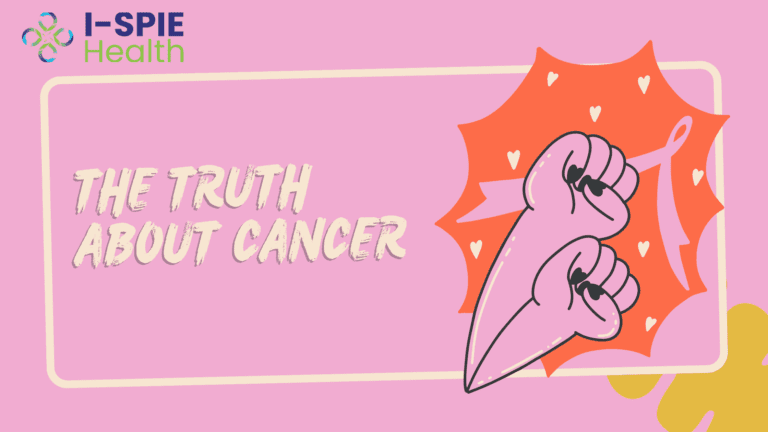Prolapse is a common medical condition characterized by the descent of pelvic organs such as the bladder, uterus, or rectum from their normal positions.
Often resulting from weakened pelvic floor muscles and connective tissues, prolapse can lead to discomfort, pain, and various complications affecting daily life. Despite its prevalence, there is sometimes confusion and concern about whether prolapse can be a sign of cancer.
Understanding the causes, symptoms, and distinctions between prolapse and cancer is essential for proper diagnosis and treatment. This comprehensive guide explores prolapse in-depth, addressing common questions and providing insights into prevention and holistic management.
Let’s learn about Can a Propalse be a Sign of Cancer?
What is Prolapse?
Prolapse is a medical condition where an organ descends from its normal anatomical position. This term is commonly associated with pelvic organ prolapse, which involves the displacement of pelvic organs such as the bladder (cystocele), uterus (uterine prolapse), or rectum (rectocele) into or through the vaginal canal. Prolapse occurs due to the weakening or damage of the pelvic floor muscles and connective tissues, which can no longer support the organs properly.
Why Does Prolapse Happen?
Prolapse can occur for several reasons, primarily due to factors that weaken the pelvic floor muscles and connective tissues. Common causes include:
- Childbirth: Vaginal delivery, especially multiple births, can stretch and weaken the pelvic floor muscles.
- Aging: As women age, the pelvic muscles lose strength and elasticity.
- Menopause: Reduced estrogen levels during menopause can weaken pelvic tissues.
- Heavy Lifting: Regularly lifting heavy objects can strain the pelvic muscles.
- Chronic Coughing: Conditions like chronic obstructive pulmonary disease (COPD) can lead to consistent pressure on the pelvic floor.
- Obesity: Excess weight increases pressure on the pelvic muscles.
- Genetic Predisposition: A family history of prolapse may increase the risk.
Read More: Is Bowel Leakage a Sign of Cancer?
Importance of Addressing Prolapse in the Body
Addressing prolapse is crucial for maintaining overall pelvic health and quality of life. Untreated prolapse can lead to discomfort, pain, and complications such as urinary incontinence, bowel movement difficulties, and sexual dysfunction. Proper management and treatment of prolapse can alleviate symptoms, prevent further deterioration, and improve daily functioning and well-being.
Can a Prolapse be a Sign of Cancer?
Prolapse itself is not a sign of cancer. However, it’s essential to understand that symptoms of prolapse can sometimes overlap with those of pelvic cancers, such as vaginal or uterine cancers. These overlapping symptoms may include pelvic pain, pressure, and abnormal bleeding. Therefore, while prolapse is generally not a direct indicator of cancer, it is important to undergo thorough medical evaluations to rule out any underlying malignancies.
Why Are People Asking About Whether Prolapse be a Sign of Cancer?
People may ask if prolapse is a sign of cancer due to the similar symptoms shared by both conditions. Pelvic pain, pressure, and changes in urinary or bowel habits can be alarming. It may lead individuals to question whether these symptoms are indicative of a more serious condition, such as cancer. Furthermore, the increasing availability of health information online and heightened awareness of cancer symptoms contribute to this concern. Consulting healthcare providers for accurate diagnoses is essential in addressing these worries.
Types of Cancer Associated with Prolapse
While prolapse itself is not typically linked directly to cancer, certain types of pelvic cancers may present with symptoms similar to prolapse. These include:
- Uterine Cancer: May cause abnormal vaginal bleeding, pelvic pain, and pressure.
- Vaginal Cancer: Symptoms include pain and pressure in the pelvic area, as well as abnormal vaginal bleeding.
- Bladder Cancer: This can lead to urinary symptoms such as frequent urination, pain, and pressure.
It’s crucial to differentiate between prolapse and these types of cancers through appropriate diagnostic tests.
Symptoms or Signs of Cancer When You Have Prolapse
If you have prolapse and are concerned about cancer, look for additional symptoms that might indicate a malignancy:
- Unexplained Weight Loss: Significant weight loss without dieting.
- Severe Fatigue: Persistent and unexplained tiredness.
- Persistent Pain: Pelvic pain that does not subside with usual treatment.
- Unusual Bleeding: Bleeding that is not related to your menstrual cycle.
- Changes in Bowel or Bladder Habits: Unexplained changes in urination or bowel movements.
If you experience these symptoms, seek medical advice promptly for further evaluation.
Prevention of Prolapse
Preventing prolapse involves maintaining a healthy lifestyle and taking steps to support pelvic health:
Pelvic Floor Exercises
Regular Kegel exercises involve contracting and relaxing the pelvic floor muscles, which helps in strengthening them. This practice is beneficial for preventing and managing conditions like urinary incontinence and pelvic organ prolapse.
Healthy Weight
Maintaining a healthy weight is crucial for reducing the pressure exerted on the pelvic floor muscles. Excess body weight can lead to weakened pelvic muscles and an increased risk of pelvic floor disorders.
Avoid Heavy Lifting
Using proper lifting techniques and avoiding excessive heavy lifting can prevent undue strain on the pelvic floor. To protect the pelvic region, it is important to engage the core muscles and lift with the legs rather than the back.
Treat Chronic Cough
Managing chronic cough conditions such as COPD is essential to reduce the strain on the pelvic floor caused by frequent coughing. Effective treatment can prevent the weakening of these muscles over time.
Hormonal Balance
Post-menopausal women might consider hormone therapy to maintain the health of pelvic tissues. Hormone therapy can help in keeping the pelvic muscles strong and resilient, reducing the risk of pelvic floor dysfunction.
Importance of a Holistic Approach
A holistic approach to prolapse considers the whole person, addressing not only the physical symptoms but also the emotional and lifestyle factors that contribute to overall well-being. This includes:
- Physical Therapy: Specialized pelvic floor therapy can provide significant relief.
- Nutritional Support: A balanced diet supports muscle health.
- Emotional Well-being: Counseling and support groups can help manage the emotional impact of prolapse.
- Integrative Medicine: Techniques such as yoga and acupuncture may offer additional support.
Concerned About Prolapse and Cancer?
Learn the potential connection between prolapse and cancer. Get expert insights and advice to understand the risks, symptoms, and necessary steps to take for early detection and effective treatment.
Conclusion
While prolapse can cause discomfort and affect quality of life, it is generally not a direct sign of cancer. However, due to the overlap in symptoms between prolapse and certain types of pelvic cancers, it is essential to seek medical evaluation to rule out any serious conditions. Addressing prolapse with a comprehensive and holistic approach can improve symptoms and enhance overall health.
FAQ
How is prolapse treated?
Treatment options include lifestyle changes, pelvic floor exercises, physical therapy, pessaries, and, in some cases, surgery.
Can prolapse be prevented?
Yes, maintaining a healthy weight, avoiding heavy lifting, performing pelvic floor exercises, and managing chronic cough can help prevent prolapse.
Should I be concerned about prolapse if I have a family history of cancer?
While prolapse itself is not a cancer indicator, it is always wise to inform your healthcare provider about your family history so they can conduct appropriate screenings.








One Comment